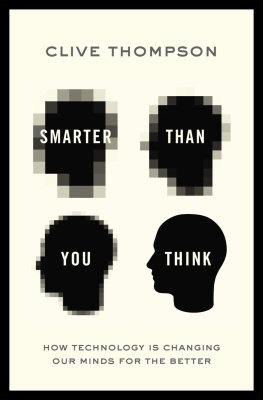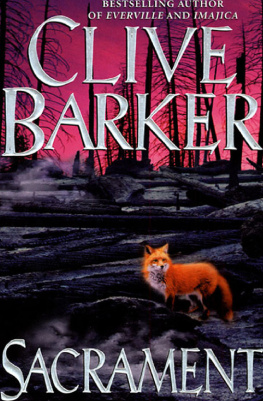
ART, RESEARCH, PHILOSOPHY
Art, Research, Philosophy explores the emergent field of artistic research: art produced as a contribution to knowledge. As a new subject, it raises several questions: What is art-as-research? Dont the requirements of research amount to an imposition on the artistic process that dilutes the power of art? How can something subjective become objective? What is the relationship between art and writing? Doesnt description always miss the particularity of the artwork?
This is the first book-length study to show how ideas in philosophy can be applied to artistic research to answer its questions and to make proposals for its future. Clive Cazeaux argues that artistic research is an exciting development in the historical debate between aesthetics and the theory of knowledge. The book draws upon Kant, phenomenology and critical theory to show how the immediacies of art and experience are enmeshed in the structures that create knowledge. The power of art to act on these structures is illustrated through a series of studies that look closely at a number of contemporary artworks.
This book will be ideal for postgraduate students and scholars of the visual and creative arts, aesthetics and art theory.
Clive Cazeaux is Professor of Aesthetics at Cardiff Metropolitan University, Wales, UK. He is the author of Metaphor and Continental Philosophy: From Kant to Derrida (2007) and the editor of The Continental Aesthetics Reader (2011). His research interests are the philosophies of metaphor, visual thinking, artistic research and art-science practice.
ART, RESEARCH, PHILOSOPHY
Clive Cazeaux
First published 2017
by Routledge
2 Park Square, Milton Park, Abingdon, Oxon, OX14 4RN
and by Routledge
711 Third Avenue, New York, NY 10017
Routledge is an imprint of the Taylor & Francis Group, an informa business
2017 Clive Cazeaux
The right of Clive Cazeaux to be identified as author of this work has been asserted by him in accordance with sections 77 and 78 of the Copyright, Designs and Patents Act 1988.
All rights reserved. No part of this book may be reprinted or reproduced or utilized in any form or by any electronic, mechanical, or other means, now known or hereafter invented, including photocopying and recording, or in any information storage or retrieval system, without permission in writing from the publishers.
Trademark notice: Product or corporate names may be trademarks or registered trademarks, and are used only for identification and explanation without intent to infringe.
British Library Cataloguing in Publication Data
A catalogue record for this book is available from the British Library
Library of Congress Cataloging in Publication Data
A catalog record has been requested
ISBN: 978-1-138-78977-7 (hbk)
ISBN: 978-1-138-78978-4 (pbk)
ISBN: 978-1-315-76461-0 (ebk)
For my mother, Dorothy Jean Cazeaux.
The ideas in this book have benefitted from discussions with colleagues at Cardiff School of Art and Design, and the Wales Institute for Research into Art and Design, Wales, UK. I would like to thank doctoral students past and present for the opportunities to discuss their art practice as research: Jan Bennett, Linda Carreiro, John Hammersley, Robin Hawes, Babette Martini, Natasha Mayo, Alise Piebalga and Helena Sands. I am grateful to Karen Harman and Carol Jones for their extremely valuable comments on chapter drafts. A special thank you must go to Christopher Norris for all the artphilosophy conversations, and for giving me the book that put me on to metaphor all those years ago.
I am grateful to the artists (and their galleries) Karla Black (Galerie Gisela Capitain, Cologne), Vija Celmins (Matthew Marks Gallery, New York), Deborah Harty and Phil Sawdon, and Walid Raad (Paula Cooper Gallery, New York) for granting me permission to reproduce images of their work.
Some parts of the book have been published previously. Sections of chapter 4 appeared in: Words and Things in Phenomenology and Existentialism, in C. Norris and K. Knellwolf (eds), Cambridge History of Literary Criticism, Volume 9: Twentieth-Century Historical, Philosophical and Psychological Perspectives, Cambridge University Press, 2001; Categories in Action: Sartre and the TheoryPractice Debate, Journal of Visual Art Practice 2, 2002; and Interrupting the Artist: Theory, Practice and Topology in Sartres Aesthetics, in K. Macleod and L. Holdridge (eds), Thinking Through Art: Reflections on Art as Research, Routledge, 2006. An early version of chapter 5 appeared as Insights from the Metaphorical Dimension of Making in the journal Lo Sguardo 17, 2015. I am grateful to the publishers concerned for permission to reprint this material.
Finally, I wish to thank Jamie Askew, Natalie Foster, Emma Hkonsen and Sheni Kruger at Routledge for their guidance and support throughout the production of the book.
What is artistic research? I say artistic research. I could have used a number of alternative names: art as research, arts-based research, creative research, fine art research, practice-based research, practice-led research and visual arts research. It is by no means clear whether they all refer to exactly the same thing. I dont propose to identify how one differs from another, since there is too much shifting and sharing of cares and concerns between them. The growth in very similar vocabulary, together with the number of publications, is an indication of interest in the area(s), but also a sign of the uncertainties and anxieties surrounding the idea that art can be or can create research. There are also similar developments in creative writing, music, theatre and performance. For a list of some of the book-length studies in the fields, see the bibliography at the end of this introduction. In this book, I am primarily interested in fine art or visual arts research. I shall refer to the topic as artistic research, while being mindful of its near-synonyms and the fact that it does not have an agreed definition. This is because it draws a contrast with conventional or scientific research, and appears to be sticking as a title in recent literature (e.g. Borgdorff 2012; Schwab 2013; Slager 2015).
While there is uncertainty over the name and the idea, one area upon which there is general agreement is the origin of artistic research: the growth of audit culture in university research, and the marketization of higher education. The first research assessment exercise (RAE) was conducted in the United Kingdom in 1986 with the purpose of identifying which university departments merited government research funding (although it was originally called the Research Selectivity Exercise). As Bence and Oppenheim note, it was a relatively low-key affair involving only traditional universities with only a small proportion of [government] funding being apportioned as a result of the ratings (Bence and Oppenheim 2005: 144). However, by the third RAE in 1992, virtually all government research funding was decided by the ratings scored by university departments in the exercise (Bence and Oppenheim 2005: 144). By the end of the 1990s, comparable exercises were being conducted in Australia, Hong Kong, Poland and Slovakia, with Germany, Italy, the Nordic countries, Hungary and New Zealand using a small component of research assessment alongside another, more heavily weighted measure, typically research student numbers (Roberts 2003: 92). Up until this point, art had not been a research subject in the sense recognized by the RAE. In the United Kingdom, art had only entered the academy as a subject for study in higher education in the 1960s as a result of the Coldstream Report, published by the National Advisory Council on Art Education. The recommendation of Coldstream was that art education should move from its traditional emphasis on drawing skills, anatomy and professional craft-based training towards a liberal education in art, with the main manifestation of this shift being the addition of an historical and contextual studies component that would constitute 20 per cent of the course (Candlin 2001: 303304). If government funding, and consequently the prestige and viability of a department, were now linked to research quality and the number of research degree students, then art, or the managers who now had responsibility for the subject in their universities, would need to get a slice of the pie.















